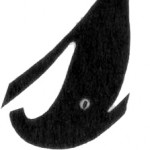Neckline of lunch box tee too small
-
9 years ago LINK
HALI MUNDY @HaliMundy
I made the lunch box tee, for a two year old, using sweatshirt fleece. The stretch was over 25%, as recommended. The tee would not go over her head; not even close. I ended up making a slit in the back of neck, finishing it, and adding elastic loop and button. Any feedback on this issue?
9 years ago LINK Sarvi
@Sarvi
Sarvi
@Sarvi
I’m afraid I haven’t made the size 2, but the size 4 fit my 5 year old really nicely. I had a peek and didn’t see any other size 2s in the pool. Might be good to note to measure the recipient’s head circ. in case a smaller or larger neck opening is needed.
9 years ago LINK Nicole
@motherof5
Nicole
@motherof5
What a pain but clever you for finding a fix!
My little ones have enormous heads as babies (they almost need staking, like dahlias) I tend to do a head tug check before finishing off.
9 years ago LINKtantemele @tantemele
I also have children with apparently big heads. I made the hopscotch top for my daughter (size 4) also in a sweater knit of the recommended stretch and it also would not go over her head. As you say: not even close. I guess the patterns take into account smaller heads. They might be the average, but for sure not in my family. I always check now as soon as I can ,as Nicole says, and modify accordingly.
By the way I have the same problem with the bucket hats and have to enlarge a bit the large size.9 years ago LINKLike Nicole says, it’s always best to check if you’re using a new pattern.
This is probably more information about how the sausage is made than you want to know, but what the heck. If you’re interested in a behind-the-scenes look, keep reading.
All our patterns are developed and grading using ASTM children’s clothing sizing standards. The detailed body measurements in this standards set are used internationally by clothing manufacturers to ensure consistency of sizing across different styles. This standards set is, incidentally, not inexpensive to purchase.
The standards accommodate the vast majority of the population (which is why they are called “standards”), and this is what ensures that in most cases a size 4 will fit a four year old well. But just like adults, childrens’ bodies can vary significantly from standards–and in some more unusual ways due to the fact that their bodies are growing and developing. There’s nothing wrong with this. It’s just a fact of nature.
My own daughter, for example, is all over the chart because she is tall and very thin for her age. She’s almost ten years old, but while our size 10 will fit most 10 year olds well, it doesn’t fit her without significant modifications. That doesn’t mean there’s something wrong with the pattern or with her body. It just means that she doesn’t fall withing the 30-70 percentile range for her age across the whole set of standards. And that’s no surprise because every year when she has her physical her pediatrician tells us where she falls in percentile range on height and weight, and she’s always been very high in one and very low in the other. (The lesson here: don’t trust hobbyist pattern makers who develop their sizing based on their own kids and their kids’ friends bodies. If Liesl had developed our sizing charts based on our daughter, our patterns wouldn’t fit most kids at all.)
But that’s the great thing about sewing. With fitting and minor pattern adjustments, you can get the perfect fit.
So the moral of the story is to always measure and check when sewing something new. The good news, though, is that since our patterns use these standards you can assume that once you determine how your child varies on one pattern that variance will be consistent across all our styles. So the adjustments you make to the first pattern you sew will be the same sort of adjustments you will make to future styles.
9 years ago LINK BeckyinFL
@BeckyinFL
BeckyinFL
@BeckyinFL
(Just wanted to note that I’m still chuckling over Nicole’s image of staking children like dahlias!)
9 years ago LINK Sarvi
@Sarvi
Sarvi
@Sarvi
I might be a nerd but I actually love the ‘sausage’ posts. I actually think this is one of things about food blogging that is so interesting — every time Deb Perelman posts on Smitten Kitchen she gets 300 questions about why do you do this? what happens if I do that? and you start to understand the dish and the process really differently than if you’d just followed it as written. For food geeks, Harold McGee’s On Food goes into these kinds of things extensively. Liesl’s posts about fabrics and their manufacture and properties were huge favorites of mine for that reason.
It’s very interesting about the percentile charts — my kid started out very tall and middling in weight, and now she’s middling across the board — as her doc says, ‘perfectly average’ — probably the only time you don’t mind hearing that about your kid, haha! I’ve become a little more cautious about doing things like adding length to extend the life of a pattern. In part it’s because now she’s in school she wears a uniform, so her mufti gets little use, but it’s also in part because now that she’s in the middle of the chart, the patterns’ proportions just work better on her.
9 years ago LINK beachmom
@beachmom
beachmom
@beachmom
@todd I, for one, find the behind the scenes info fascinating! Sounds like S is built a lot like my oldest. That’s part of the reason why I sew as RTW that fits was hard to find, especially during the tween years.
My tried and true method of making sure a t-shirt neckband is going to fit is to pull it on over my own head. Obviously it wouldn’t work if you’re sewing for babies but for pre-schoolers on up, it’s been fool proof.;)
You must be logged in to reply to this topic.
copyright
Unless otherwise credited, all work on this blog is © Liesl + Co., Inc, 2008-2024. You are welcome to link to this blog, but please ask permission before using any text or images.